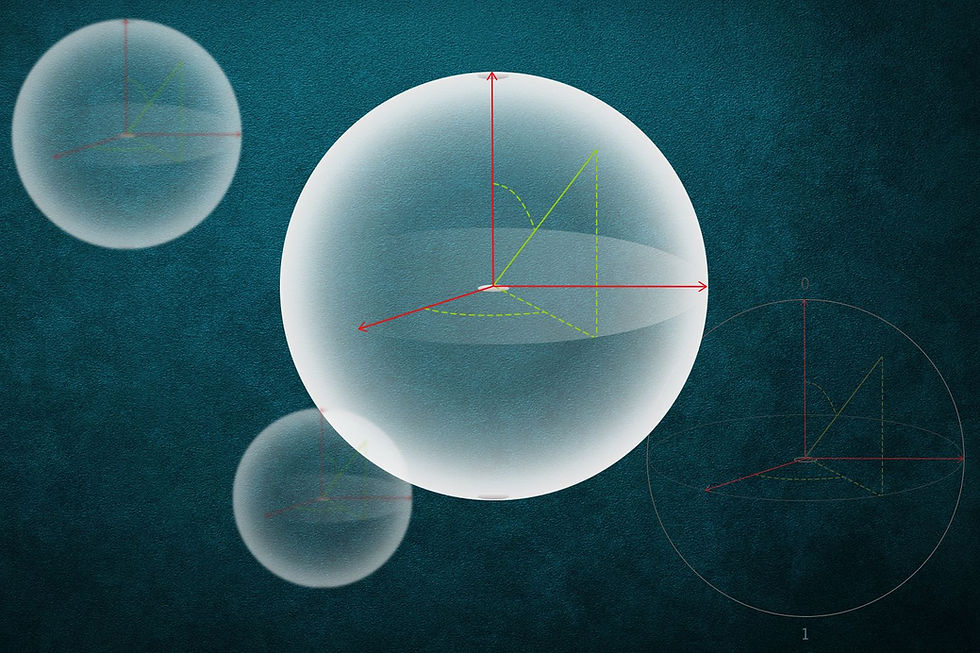From Bits to Qubits
- rinaismailati
- Sep 30, 2020
- 2 min read
Updated: Aug 16, 2021
Qubits are the unit of information of quantum computers. What are they exactly and how do they differ from classical bits?

In 1984, a British physicist called David Deutsch had a revolutionary idea: what if there was a computer that instead of obeying the laws of classical physics, obeyed the laws of quantum mechanics? What if we could establish a relationship between the superposition of states of particles and computation? In what ways computation could benefit from the superposition of states of particles?
Qubits and states
The unit of information in classical computers is called a "bit" and it takes two values: zero or one. A quantum computer on the other hand can use a particle as a unit of information, for example, an electron. The rotation of the electron can be in two positions only: "up" or "down". In analogy with the classical case, this particle could represent the classical value "zero" with its "down" position, and the classical value "one" with its "up" position of rotation. The superposition of these rotation states "down" and "up" could represent the two values simultaneously. This new unit of information is called a "qubit" (short for "quantum bit"). By manipulating qubits we open the door to a new world of extremely powerful computers, more powerful than any classical supercomputer ever built.

Classical vs Quantum Computers
A classical computer performs its calculations sequentially. Let us take as an example the numeric information contained in 32 bits. With this number of bits one can encode numbers from 1 up to 4.292.967.296. In order to find a certain number present in this range, the classical computers has to search for it bit by bit. On the other hand, a quantum computer can perform this search in an extremely faster way.
If we take 32 electrons, we put them in a "closed box" and then we put them in superposition of states (for example through a strong electric pulse to change the rotation of electrons from "up" to "down"), these 32 electrons, the qubits of the quantum computer, would represent all the possible combinations of rotations "up" (one) and the rotation "down" (zero) in a simultaneous way. This way, the search for the given number would be done only once, with all the possible options. If we increase the number of qubits, for example up to 250, the quantity of the simultaneous operations that could be performed would be around 10^75, something more than the number of atoms in our Universe.
The work of Deutsch showed that quantum computers were a theoretical possibility. Many researchers around the world are working to make these computers a reality. The technical difficulties have not been surpassed yet. Some people think it will take 15 to 20 years to make them a reality, some others doubt it will ever be possible. However, labs around the world have managed to build small quantum computers, with up to 53 qubits (IBM).
Reference: Matematici, spie e pirati informatici (Mondo Matematico) - RBA Italia S.r.l.



Comments